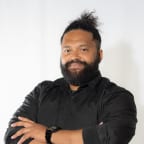Otintaai is Kiribati for sunrise. It is the name given to the female warrior costume created by master iKiribati weavers and makers Kaetaeta Watson and Louisa Humphry who share over a century's worth of cultural knowledge and experience.
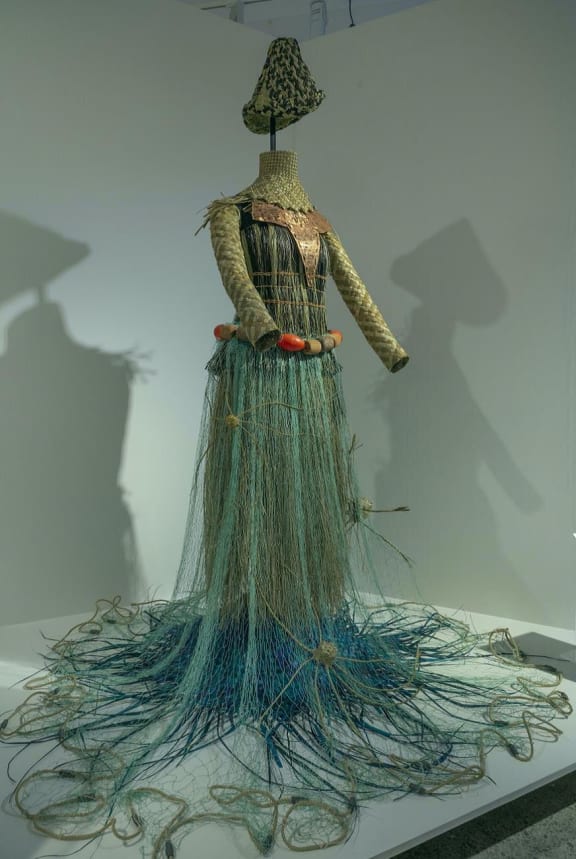
Otintaai, meaning sunrise, is a costume created for a female Kiribati warrior facing rising sea levels caused by climate change, overfishing and plastic pollution. Photo: Shaun Matthews/TheDowse Art Museum
Made originally for the Ā Mua:New Lineages of Making exhibition at The Dowse Art Museum, which ran from June to October last year, Otintaai was formally handed over to its new custodians, Te Papa, on Saturday.
Kaetaeta and Louisa refer to their creation as an actual entity standing tall in the face of rising seas and warning of the perils of climate change, overfishing and polluting our oceans with plastic.
"We called her Otintaai, which is the rising sun, because we don't want to be completely negative about fighting the people that are maybe contributing to all the troubles," explained Louisa Humphry.
"We want to know that she stands there to pre-warn and pass that message on to our young people," she said
But they say "she" is also a symbol of hope.
"The sun rises every morning, so we have got to stay positive that our earth is still giving us this beautiful sun to rise to every morning," Kaetaeta said.
As part of the handover Te Papa hosted the two charismatic creators, along with members of their family and community, in a public demonstration of raranga (weaving), bibiri (plaiting) and taeriri - techniques used in making mats and baskets, floral head pieces and dancing costumes.
Some of the braver visitors like Sandra from the Cook Islands had a go at making the Te Itara's or floral headpieces.
"It is slightly different they use four-plait and don't have a band, which is the frame on which we would do something like this, " said Sandra comparing the construction to her country's ei.
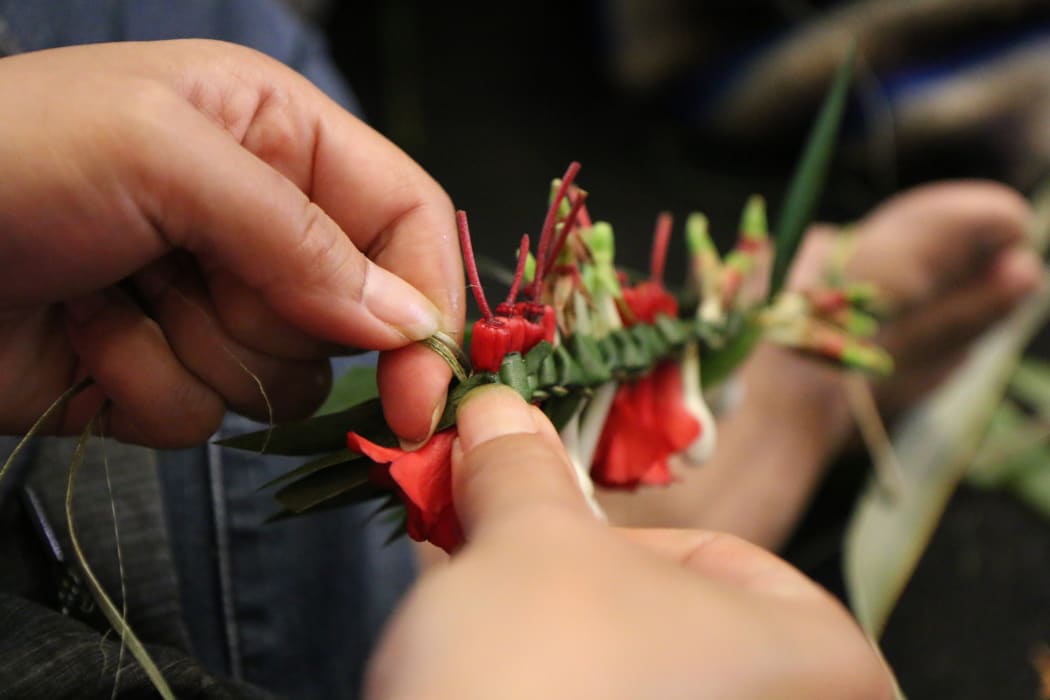
One of the participants in the event from the Cook Islands says it was interesting comparing weaving techniques from her culture with the Kiribati methods. Photo: RNZ Pacific/Koroi Hawkins
Working next to her was Taeaolelei from Samoa who thought it was interesting what traditional practices and knowledge different Pacific people's bring with them when the migrate to New Zealand.
"Like Samoans are big on Tattooing, Fijians on their weapons and some on their tā moko others like Tongans on their ngatu and this is like indigenous knowledge that we need to revive," Taeaolelei said.
This passing on and preservation of cultural knowledge is big part of the journey Kaetaeta Watson and Louisa Humphry are on.
Both were born and raised in Kiribati, Louisa comes from Kuria Island and Kaetaeta from Tabiteuea Island.
They both married Englishmen and were among the first iKiribati to migrate to New Zealand in the 70s and so their families have always been close. But they said weaving and creating together came later.
"We thought of our own children that are growing up in New Zealand...and we as people from Kiribati wanted them to know their roots from Kiribati." Louisa said.
"And as far as weaving goes you are also promoting that language because you are calling things the names of how we used to do them and just conversation around the weaving," she said.
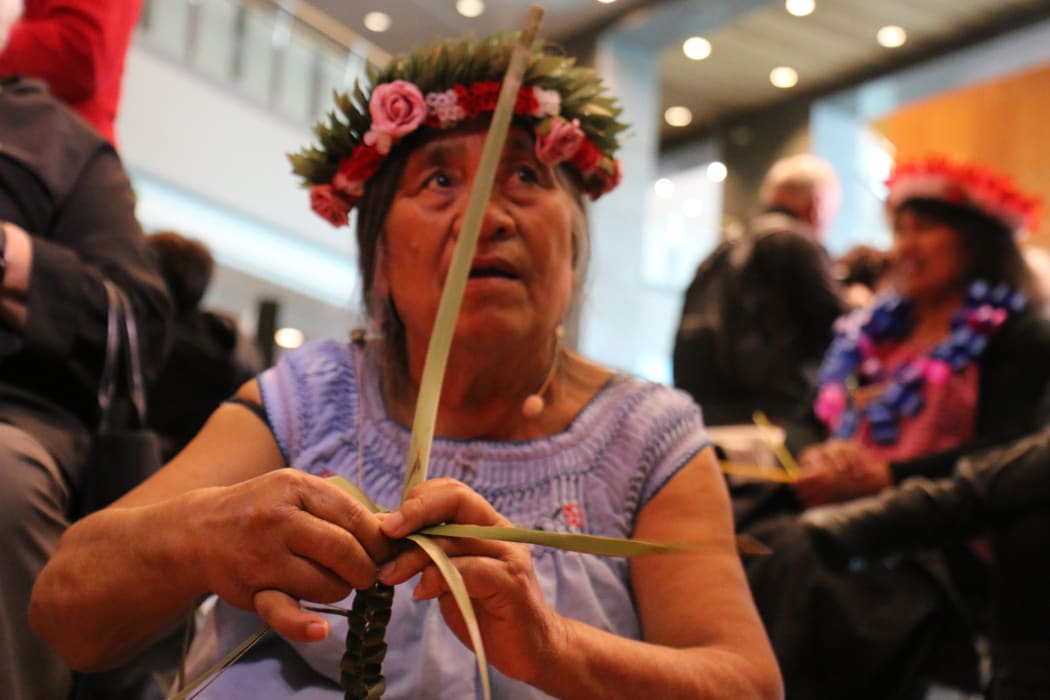
Kaetaeta Watson was born on Tabiteuea Island in Kiribati she has over half a century of weaving knowledge and experience. Photo: RNZ Pacific/Koroi Hawkins
But Kaetaeta said the way they are passing on the knowledge in New Zealand is very different from the way they were taught in Kiribati.
"I grew up with that idea, you have got to do things that make sense, functional things. Therefore, you learn without realising. That thatch or leaf there you turn it into a mat or a bag or something...it has got to be useful," explained Kaetaeta.
"Now we are a bit more open, we do flowers and all sorts, and we often say if mum or grandma were here they would say 'what a waste of time!'," she said.
Among the family members who turned up to show their support were Louisa's great grandniece Tiikan Kabiriera and Tiikan's mother Sailosa.
"Seeing the skills and talent and knowledge of our ancestors that the mamas here are still practising we are so please to be a part of it and learn some of the skills and maybe we can go back and build on what we see today," said Sailosa.
Sailosa's daughter Tiikan had a complex looking woven flower and was almost done weaving a cube-like ball, she said she remembered learning to weave as a child back in Kiribati but said had not used the skills much since migrating to New Zealand in 2006.
"It's good to have connection to people that can do this...I haven't done this in a long time, so it is good to pick up the habit again," Tikaan said.
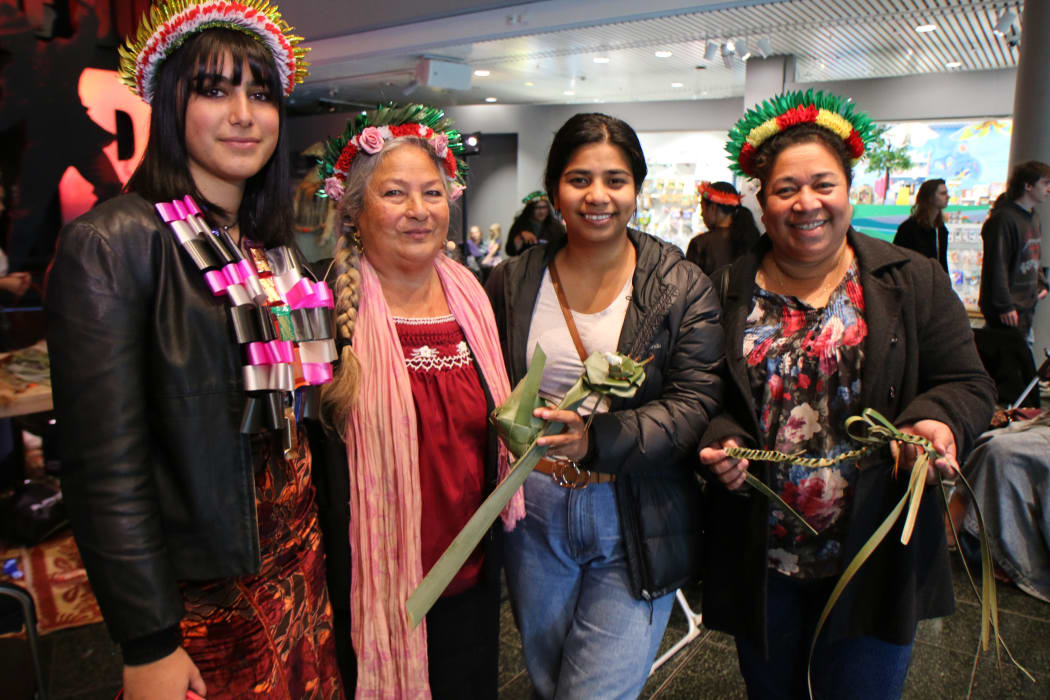
Louisa Humphry (2nd from left) flanked by her granddaughter Isabella Levet ( L) and her great grandniece Tiikan Kabiriera (R) and grandniece Sailosa Kabiriera Photo: RNZ Pacific/Koroi Hawkins
Kaetaeta and Louisa are well known within the iKiribati community in New Zealand and are often invited to run workshops with different groups around the country.
They said they would like to do more but there are cultural considerations they must take into account.
"Because in our culture you don't go around saying 'I am a weaver, I can help you'. You have got to be invited. because it's like boasting and I think it goes with being humble," Louisa explained.
"It's quite a complex mentality," Kaetaeta chimes in.
She explained that while the basics of raranga are widely shared within the community the more intricate and refined patterns and designs are more like heirlooms, carefully guarded and handed down only to immediate family members or very close friends.
"So, you as an interested person might go and ask, 'how do you really do it?' but if they are that closed family that really don't want to share that knowledge, they'll keep it," Kaetaeta said.
She said the downside of this was if younger members of the family did not take an interest in raranga then that knowledge died with the elders.
Kaetaeta and Louisa said they were both quite surprised when they made Otintaai which is inspired by Te Otanga, or men's armour in Kiribati, that there were requests for the piece to be taken to Kiribati to be put on show.
"We become really sad when we hear that because then we know that the knowledge is almost gone," said Kaetaeta.
Between the two of them Louisa and Kaetaeta have over a century's worth of cultural knowledge and expertise and they are on a mission to ensure that knowledge is preserved for future generations of iKiribati.
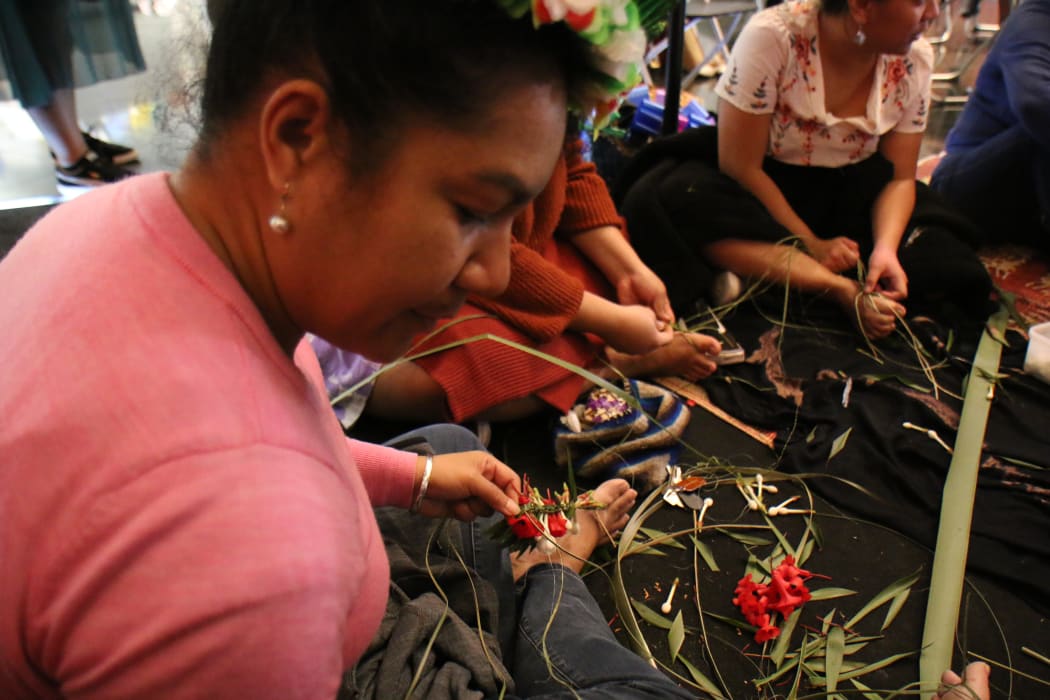
Participants at the Kiribati weaving demonstration in Te Papa said they enjoyed having a go at making Te Itera or floral head wreaths. Photo: RNZ Pacific/Koroi Hawkins
Travelling with them on this journey is the cultural organisation Lagi-Maama Academy and Consultancy co-founded by Toluma'anave Barbara Makuati-Afitu who is Samoan and Kolokesa Uafā Māhina-Tuai who hails from Tonga.
"Mama's Kaetaeta and Louisa have actually got heaps of ideas, they are wanting to do books, you know on weaving in their own reo but also utilising harakeke and Aotearoa's beautiful natural resources," said Toluma'anave.
"So, I suppose for Lagi-Maama we will continue to support anything and everything they want to do and finding ways to make that a reality including applying for funding and using our skills to mediate and advocate for them in other spaces - which we are honoured to do," she said.
Kolokesa Uafā Māhina-Tuai said one thing that is often raised when working with older generations of Moana Oceania weavers and makers is that there is not much interest or buy-in from younger generations to learn what they do.
But I think another sort of approach is how can we elevate our experts like Kaetaeta and Louisa and say hey these are our master artists," Kolokesa said.
She said there are so many people out there sitting on a wealth of Moana Oceania knowledge, but they are only known within their own circles.
"So how do we make them known within mainstream and be the ones that our children learn about because that is how we can make them aspire to do what they do," Kolokesa Uafā Māhina-Tuai said.
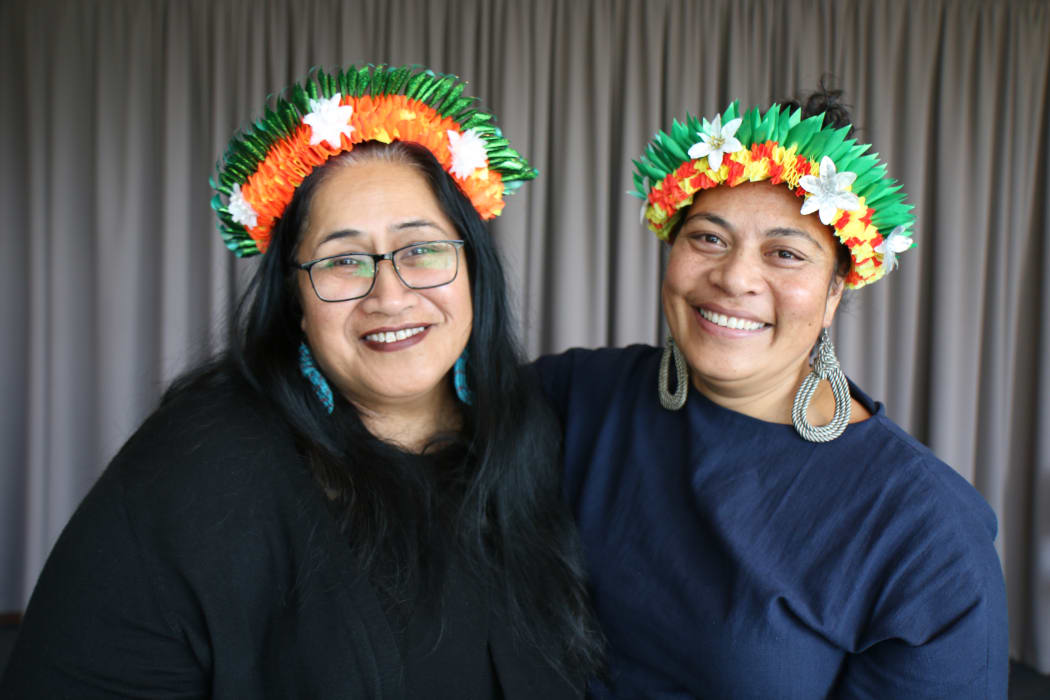
Toluma'anave Barbara Makuati-Afitu and Kolokesa Uafa Mahina-Tuai are helping weavers Kaetaetea and Louisa pass on their knowledge to future generations Photo: RNZ Pacific/Koroi Hawkins
